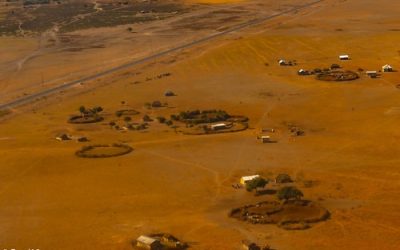Climatic Seasons in Tanzania
Tanzania’s climatic seasons play a significant role in determining the best time to visit the country. With its diverse landscape, including savannahs, forests, and coastal areas, Tanzania experiences distinct wet and dry periods throughout the year. Understanding these seasons helps travelers choose the optimal time for safaris, wildlife viewing, and exploring the country’s natural beauty.
Wet Season (March to May)
The Wet Season in Tanzania, which occurs from March to May, is characterized by frequent and heavy rainfall across most regions of the country. During this period, the landscape becomes lush and green, creating a picturesque scenery that is ideal for photography and enjoying the natural beauty of Tanzania. However, travel during these months can be challenging due to muddy roads, higher humidity, and occasional floods, which may affect game viewing and accessibility to some remote areas. Despite these challenges, the wet season offers unique opportunities, such as witnessing the lush environment, fewer tourists, and the birthing season of many animals, making it a suitable time for those seeking a more secluded experience or interested in birdwatching and ecological studies.
Dry Season (June to October)
The dry season in Tanzania, which lasts from June to October, is considered one of the best times to visit the country. During this period, the weather is typically sunny and clear, making it ideal for wildlife safaris and outdoor activities. The reduced rainfall results in better visibility of animals, especially in national parks like Serengeti and Ngorongoro Crater. Moreover, the dry season is perfect for witnessing the Great Migration in the Serengeti, as large herds of animals gather around water sources. Travelers can enjoy comfortable temperatures and less humidity, ensuring a more enjoyable and accessible experience throughout Tanzania’s diverse landscapes.
Short Rains (November to December)
The short rains in Tanzania typically occur from November to December, bringing occasional showers that refresh the landscape. During this period, the weather is generally mild and less crowded, making it an ideal time for travelers seeking a quieter safari experience. The environment is lush and vibrant, providing excellent conditions for wildlife viewing and photography. Although there may be some rain, it usually does not disrupt travel plans significantly, and the scenery is particularly beautiful during these months. This season offers a unique opportunity to witness the country’s rich biodiversity at a more relaxed pace.
Long Rains (March to May)
The Long Rains in Tanzania, which occur from March to May, are characterized by frequent and heavy rainfall across much of the country. During this period, lush greenery flourishes, creating stunning landscapes and vibrant scenery. However, travel can be challenging due to muddy roads and potential flooding, which may hinder access to some remote areas and wildlife parks. Despite the weather, this season offers unique opportunities for birdwatching and witnessing the birth of many young animals. For travelers seeking fewer crowds and a more affordable experience, the Long Rains can be an interesting time to visit, especially if equipped with proper gear and a flexible itinerary.
Best Times for Wildlife Viewing
Discover the optimal times to visit Tanzania for wildlife viewing, ensuring your safari experience is unforgettable. The timing plays a crucial role in observing the diverse animals and breathtaking landscapes this country offers. Whether you’re seeking the wildebeest migration or spotting the Big Five, knowing when to go can make all the difference in your adventure.
Dry Season (June to October)
The dry season, from June to October, is considered one of the best times to visit Tanzania for wildlife viewing. During this period, animals gather around water sources, making it easier to spot herds of elephants, lions, giraffes, and other wildlife. The clear weather and minimal rain also improve visibility and comfort for safaris. Additionally, this time coincides with the migration of the wildebeest and zebras in the Serengeti, offering spectacular wildlife spectacles. Overall, visiting Tanzania during the dry season provides optimal conditions for memorable game viewing experiences.
Plus Points of the Dry Season
The best time to visit Tanzania for wildlife viewing is typically during the dry season, which spans from June to October. During this period, the weather is cooler and dry, making it easier to spot animals as they gather around water sources. The sparse vegetation also enhances visibility, offering excellent opportunities for wildlife photography and observation.
Plus Points of the Dry Season include the concentration of animals around limited water sources, increasing the chances of sightings. This season also coincides with the great migration of wildebeest and zebras in the Serengeti, providing a spectacular natural event for visitors. Additionally, the dry conditions mean fewer insects and a more comfortable experience while exploring national parks and reserves.
Migration Patterns and Best Viewing Periods
The best times for wildlife viewing in Tanzania are closely linked to the country’s migration patterns and seasonal changes. Generally, the dry season from June to October offers optimal conditions for spotting animals, as they gather around water sources and vegetation is less dense, making wildlife easier to observe. The Great Migration of wildebeest and zebras occurs from July to October, mainly in the Serengeti, providing spectacular opportunities for witnessing this extraordinary spectacle. The rainy season, from November to May, can also be a good time to visit if you prefer fewer tourists and lush scenery, although some areas may be more challenging to access. The short rains in November and December, as well as the long rains from March to May, influence animal movements and should be considered when planning your trip. Overall, the dry months from June to October are considered the peak period for wildlife viewing in Tanzania, especially for seeing predators and migratory herds, making it the ideal time to visit for nature enthusiasts.
Optimal Conditions for Safari Experience
Embarking on a safari in Tanzania offers an unforgettable adventure amidst stunning landscapes and diverse wildlife. To make the most of your experience, choosing the optimal conditions is essential. Understanding the ideal time to visit can enhance spotting wildlife, enjoy pleasant weather, and avoid peak tourist crowds, ensuring a truly memorable journey into Africa’s wildlife paradise.
Animal Concentrations and Water Sources
The optimal conditions for a safari experience in Tanzania depend on various factors, including the time of year, animal concentrations, and water sources. Visiting during the dry season, from June to October, offers ideal wildlife viewing conditions as animals congregate around remaining water sources, making it easier to observe a diverse range of species. During this period, vegetation is less dense, providing better visibility across the plains. Animal concentrations tend to be higher near watering holes and rivers, where animals gather to hydrate, increasing opportunities for sightings. Additionally, the dry, clear weather enhances the chances of experiencing memorable game drives and photography. Planning a safari during these optimal conditions ensures a richer, more predictable wildlife experience in Tanzania.
Landscape and Scenery
The best time to visit Tanzania for a memorable safari experience is during the dry season, typically from June to October. During this period, the weather is generally clear and warm, providing excellent visibility for wildlife viewing. The landscape is characterized by sparse vegetation and water sources are limited, which concentrates animals around remaining waterholes, making it easier to spot diverse wildlife. The scenery features vast plains, acacia woodlands, and iconic savannahs, offering breathtaking views that encompass the rich ecological tapestry of Tanzania. Visiting during this season ensures optimal conditions for observing the Big Five and enjoying the stunning landscapes that define this remarkable destination.
Thermal Comfort and Visibility
The best time to visit Tanzania for a safari experience is during the dry season, typically from June to October. During this period, animals congregate around water sources, making wildlife viewing more accessible and rewarding. Optimal conditions for a safari include clear weather and minimal rain, which enhance visibility and allow for better photography. Additionally, thermal comfort is generally maintained during these months, as temperatures are moderate and cooler mornings and evenings provide a pleasant experience. Good visibility is further supported by dry conditions that reduce dust and haze, ensuring clear views of wildlife and landscapes. Planning your trip within this window will help maximize your chances of an unforgettable safari adventure with comfortable weather and excellent viewing opportunities.
Weather Considerations for Travelers
Planning a trip to Tanzania requires careful consideration of the weather to ensure the best experience. Weather conditions can greatly influence outdoor activities, wildlife viewing, and overall comfort during your visit. Understanding the seasonal patterns helps travelers choose the optimal time to explore this beautiful country and make the most of their adventure.
Temperature Variations Throughout the Year
The best time to visit Tanzania depends largely on weather conditions and temperature variations throughout the year, which can significantly influence your travel experience. It is essential to consider these factors carefully when planning your trip to ensure optimal weather conditions for wildlife viewing, outdoor activities, and comfort.
- Dry Season (June to October): This period is generally considered the best time to visit Tanzania. Temperatures are moderate, and rainfall is minimal, making it ideal for safaris and wildlife spotting. The weather is cooler, especially in the mornings and evenings, providing comfortable conditions for outdoor adventures.
- Wet Season (November to May): During these months, Tanzania experiences its rainy season with higher temperatures and increased humidity. Heavy rains can lead to lush landscapes but may also cause challenging travel conditions and limited visibility for wildlife viewing. However, this is also the time when the landscapes are most vibrant, and it is a great period for birdwatching and witnessing the calving season.
- Temperature Variations: Throughout the year, temperatures can range from around 20°C (68°F) during the cooler months to over 30°C (86°F) in the hotter periods. Coastal areas and the Serengeti tend to be warmer, while higher elevations like Ngorongoro Crater can be cooler, especially at night.
Rainfall Impact on Travel Plans
When planning a trip to Tanzania, it’s essential to consider the weather conditions, particularly rainfall, as it can significantly affect travel plans. During the rainy season, which typically occurs from March to May and again in November, heavy showers can lead to muddy roads and limited visibility, making some safaris and outdoor activities challenging. These months also tend to have fewer tourists, possibly resulting in lower prices and less crowded attractions. Conversely, the dry season from June to October offers clearer skies, better wildlife viewing opportunities, and easier access to remote areas. Travelers should weigh the impact of rainfall on their preferred activities and choose their travel dates accordingly to ensure the best experience in Tanzania.
Best Months for Comfortable Weather
The best time to visit Tanzania depends on favorable weather conditions that enhance your travel experience. Generally, the most comfortable weather occurs during the dry seasons when there is minimal rainfall and pleasant temperatures. These periods allow for excellent wildlife viewing and outdoor activities without the disruptions caused by weather extremes. Travelers should aim to visit during the dry months for optimal comfort and adventure opportunities.
Peak Tourist Seasons in Tanzania
Tanzania is a premier travel destination renowned for its breathtaking wildlife safaris and stunning landscapes. Understanding the peak tourist seasons can help visitors plan their trips to maximize their experience and enjoy the best wildlife sightings. The country’s peak seasons are influenced by weather patterns and animal migrations, offering unique opportunities for adventure and exploration during specific times of the year.
High Season (July to October)
The peak tourist season in Tanzania occurs from July to October, making it the most popular time for travelers to visit the country. During these months, the weather is generally dry and cool, providing ideal conditions for wildlife viewing and safaris. Many animals gather around water sources, increasing the chances of spotting big game in national parks such as Serengeti and Ngorongoro Crater. This period also coincides with the migration of wildebeest and other animals, offering spectacular wildlife spectacles that attract photographers and nature enthusiasts alike.
- Excellent wildlife viewing opportunities due to dry season and animal gatherings
- Great conditions for outdoor activities like safaris and trekking
- Peak time for witnessing the Great Migration in Serengeti
- Higher prices for accommodations and tours due to increased demand
- Busy parks and tourist spots, so bookings should be made well in advance
Off-Peak and Shoulder Seasons
The best time to go to Tanzania depends on your travel preferences, as the country experiences distinct peak, shoulder, and off-peak seasons that influence wildlife viewing, weather, and costs.

Peak tourist seasons in Tanzania typically occur from June to October, coinciding with the dry season and the Great Migration in the Serengeti. During this period, wildlife is easily spotted around water sources, making it ideal for safaris. The weather is generally clear and cool, providing excellent conditions for game viewing, but prices for accommodation and tours tend to be higher.
Off-peak seasons usually occur from March to May, which corresponds to the long rains. During this time, the parks are less crowded, and discounted rates are common. However, the weather can be unpredictable, with heavy rains making some areas less accessible and impacting wildlife sightings.
Shoulder seasons, roughly from November to December and late April to June, offer a balance between good wildlife viewing opportunities and lower visitor numbers. The weather varies, with some rain in the shoulder periods but generally better conditions than the off-peak months. This time is also ideal for experiencing cultural events and exploring beyond the national parks at more affordable rates.
Impacts of Peak Seasons on Prices and Crowds
The peak tourist seasons in Tanzania generally occur during the dry months from June to October and from December to February. These periods are popular due to favorable weather conditions, clear skies, and excellent wildlife viewing opportunities, especially in national parks like Serengeti and Ngorongoro Crater. During these times, the wildlife gathers around water sources, making it an ideal period for safaris.
However, the influx of travelers during peak seasons significantly impacts prices and crowds. Accommodation and safari package costs tend to rise due to high demand, and popular wildlife reserves can become crowded with visitors. This often results in a busier experience, which might detract from the tranquility and exclusivity some travelers seek. Planning ahead and booking early can help mitigate higher costs and ensure better availability during these busy periods.
Special Events and National Holidays
Special events and national holidays in Tanzania offer a unique opportunity for travelers to experience the country’s rich culture and vibrant traditions. These occasions often feature colorful celebrations, traditional dances, and special ceremonies that provide an authentic glimpse into Tanzanian life. Planning your visit around these special times can enhance your travel experience and allow you to join in the local festivities while exploring the best locations in Tanzania.
Timing of Cultural Festivals
The best time to visit Tanzania largely depends on the special events, national holidays, and cultural festivals that occur throughout the year. Timing your trip to coincide with these celebrations can enhance your cultural experience and provide unique opportunities to witness local traditions and festivities.
- Wildlife Migration and National Parks: The dry season from July to October is ideal for safaris and wildlife viewing, especially during the Great Migration in Serengeti and Maasai Mara regions.
- Masai Cultural Festivals: The annual Maasai Olympics are held in August, offering a vibrant display of Maasai culture and athleticism.
- National Holidays: Independence Day on December 9th is celebrated with parades and cultural performances across the country.
- Climate Considerations: The rainy seasons from March to May and November to December can make travel challenging but are also the best times for birdwatching and lush landscapes.
- Other Cultural Events: The Zanzibar International Film Festival takes place in July, showcasing local and international films, music, and arts, making it an excellent time for cultural enthusiasts.
Wildlife Events and Migration Peaks
The best time to visit Tanzania depends on special events, national holidays, wildlife events, and migration peaks. During major national holidays like Independence Day, visitors can experience local celebrations and cultural events. Wildlife viewing peaks during the dry seasons, particularly from June to October, when animals gather around water sources, enhancing safari experiences. The Great Migration, one of the most spectacular wildlife events, occurs between July and October, when millions of wildebeest, zebras, and other animals cross the Serengeti. Additionally, the wet seasons from November to May offer lush landscapes and fewer crowds, ideal for birdwatching and exploring off-the-beaten-path areas. Planning around these events ensures an unforgettable Tanzanian adventure with optimal wildlife sightings and cultural experiences.





0 Comments